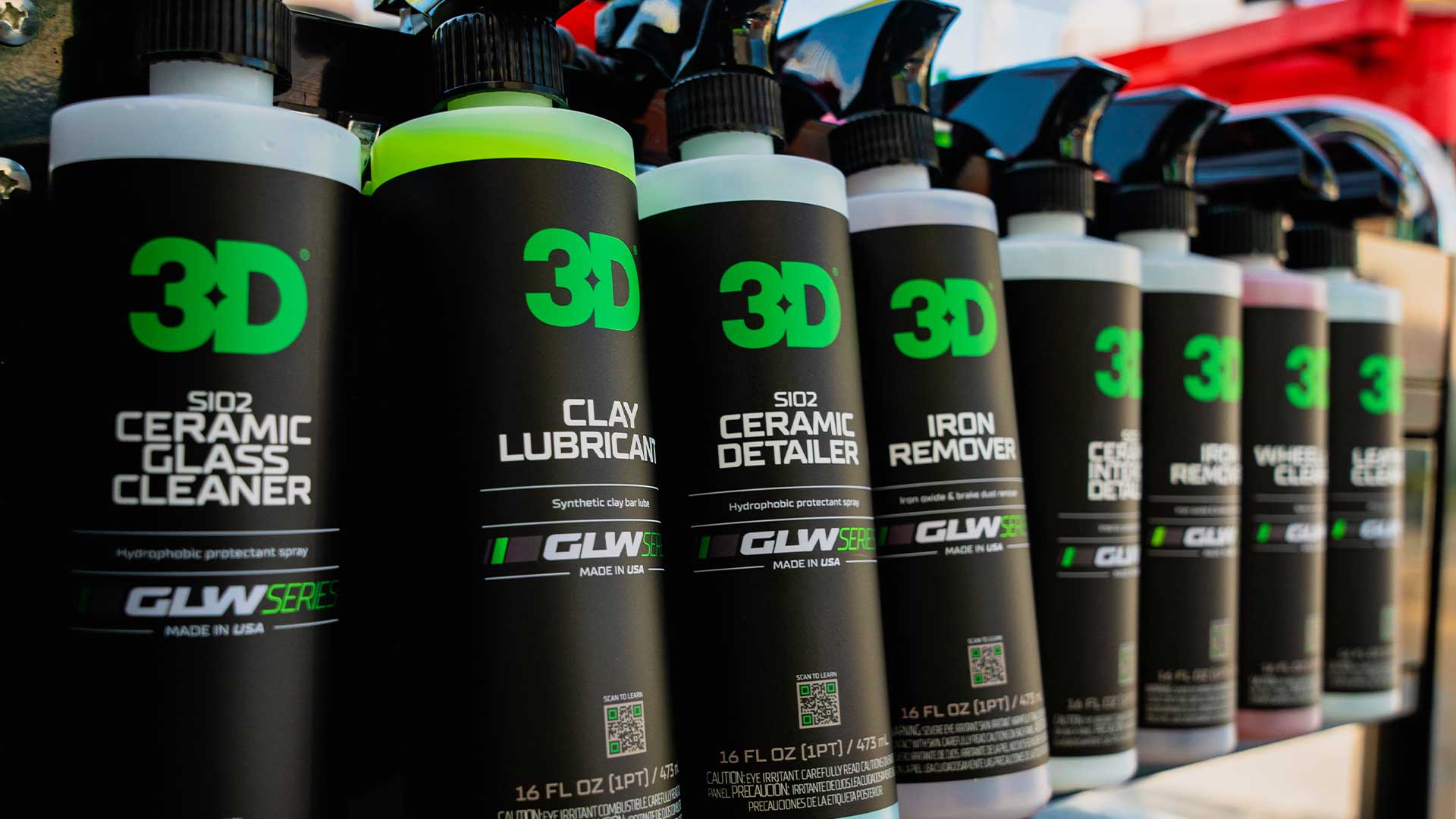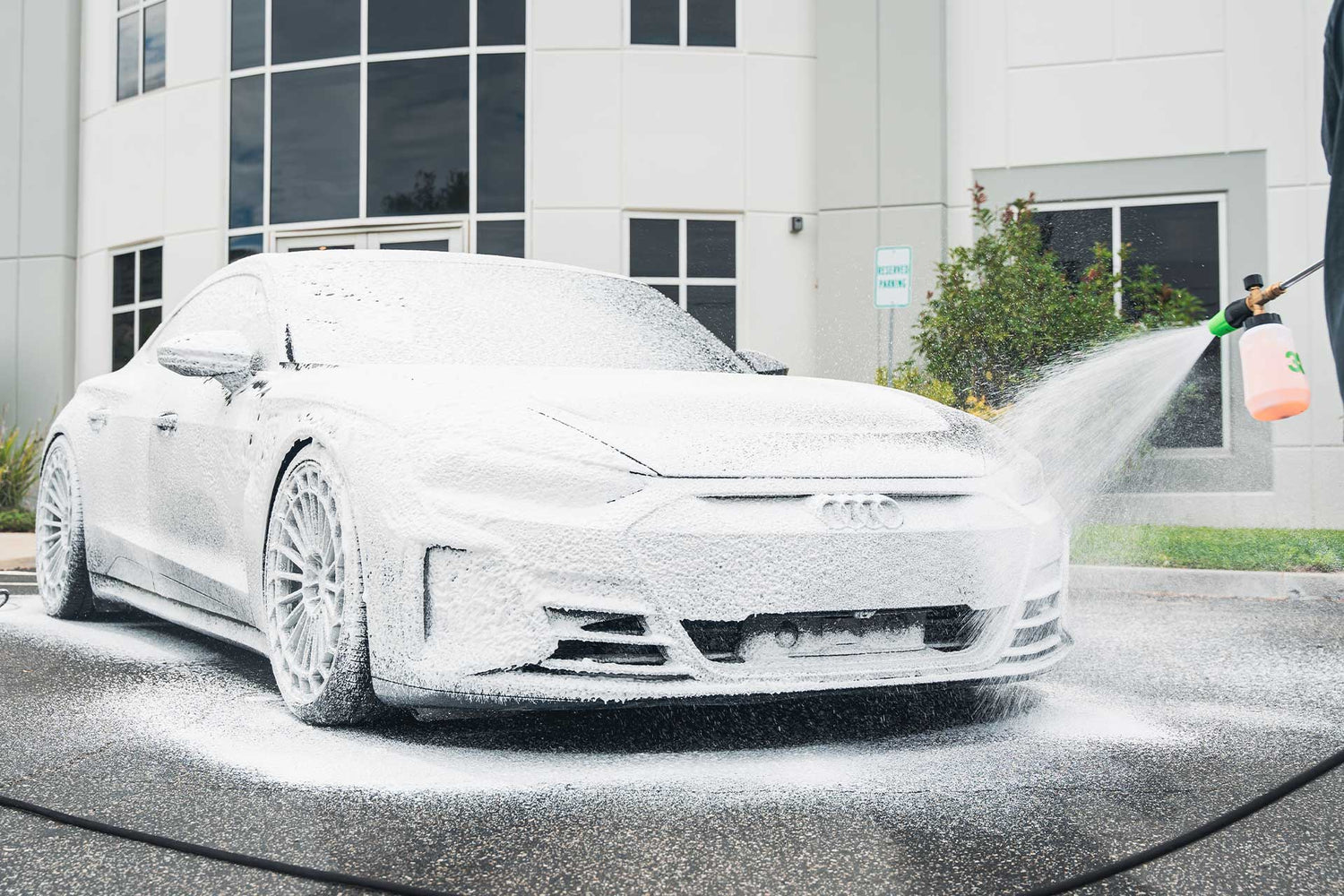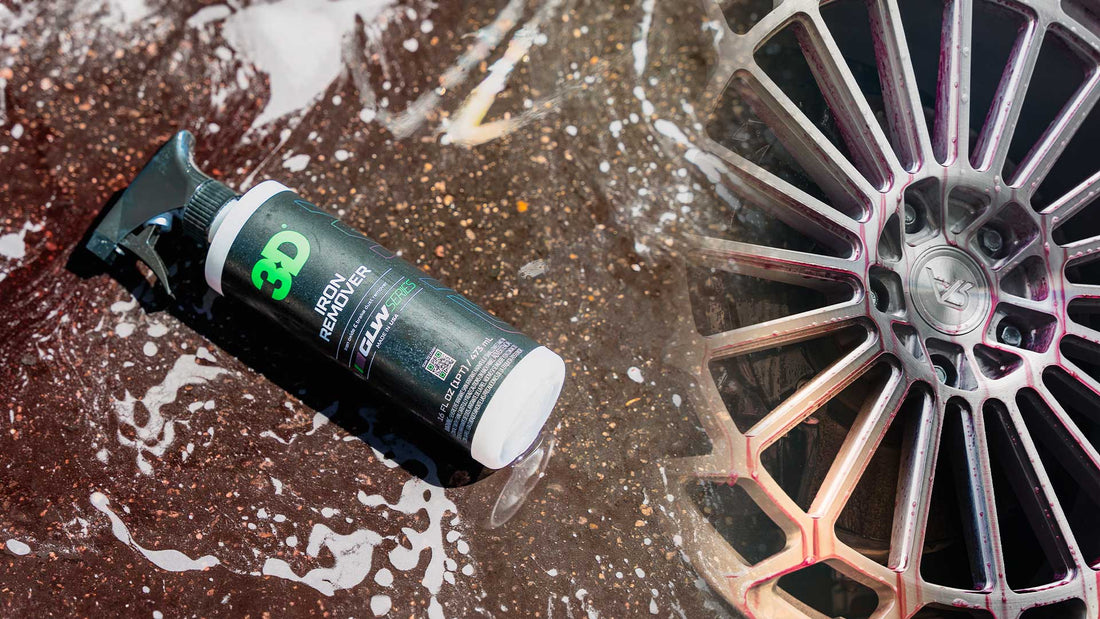
The Ultimate Guide to Car Paint Decontamination
Share
Maintaining the paintwork of your car is crucial to keep it looking new. Over time, contaminants can etch into the paint, causing damage to the car’s surface. There are many ways that the paint on your car can become contaminated, and it is essential to inspect your car’s paint regularly for any bonded contaminants. In this article, we’ll break down exactly how to decontaminate your car’s paint. We’ll also cover post-decon techniques that will help protect your car from future contamination.
What Is Paint Decontamination?
The paintwork of your car is exposed to a ton of contamination; such as pollen, tar, road grime, iron, etc. One of the most common contaminants we see is iron fallout from brakes, otherwise known as brake dust. In most cases, a traditional wash just isn’t enough to get rid of these often microscopic contaminants.
This is where paint decontamination comes into play. Decontamination is the process of removing the aforementioned contaminants from your car’s paint. By regularly checking for contamination and performing a full paint decon along with proper post-decon techniques, you can prevent and protect from future paint contamination.
Why Paint Decontamination Is Important
The most obvious reason is because it keeps your car looking new and clean. However, there are a few other important reasons as to why paint decon is crucial.
One of the biggest issues is paint correction. When a car isn’t fully decontaminated, attempting to correct its paint can cause more harm than good. When the car’s surface is littered with contamination, you run the risk of grinding the contaminants into the paint while using a polishing pad, causing unsightly scratches.
Additionally, a contaminated car can cause problems with the application and longevity of waxes and sealants. It makes it harder for the wax or sealant to bond properly, giving your vehicle a less than ideal coating of protectant.
How to Remove Paint Contamination
Depending on who you ask, most people will tell you that you can either use a clay bar and lubricant or a decon spray to get rid of contamination. However, at 3D we like to use both methods when doing a full decon on a car. This gives you a blank canvas to safely apply wax, sealants, or even a ceramic coating while ensuring proper bonding to the paintwork.
Wheels & Tires
Wheels and tires? Aren’t we talking about paint? Yes, but it’s always a good idea to clean the wheels and tires first before moving onto painted surfaces. Start the decon process by cleaning your wheels and tires, just like you would during a regular car wash.
Using an iron remover spray on the wheels is a great way to decontaminate your wheels and get rid of all that caked-on brake dust, especially in the barrels. This is also an important step if you plan on applying a protectant to the wheels, like a ceramic coating.
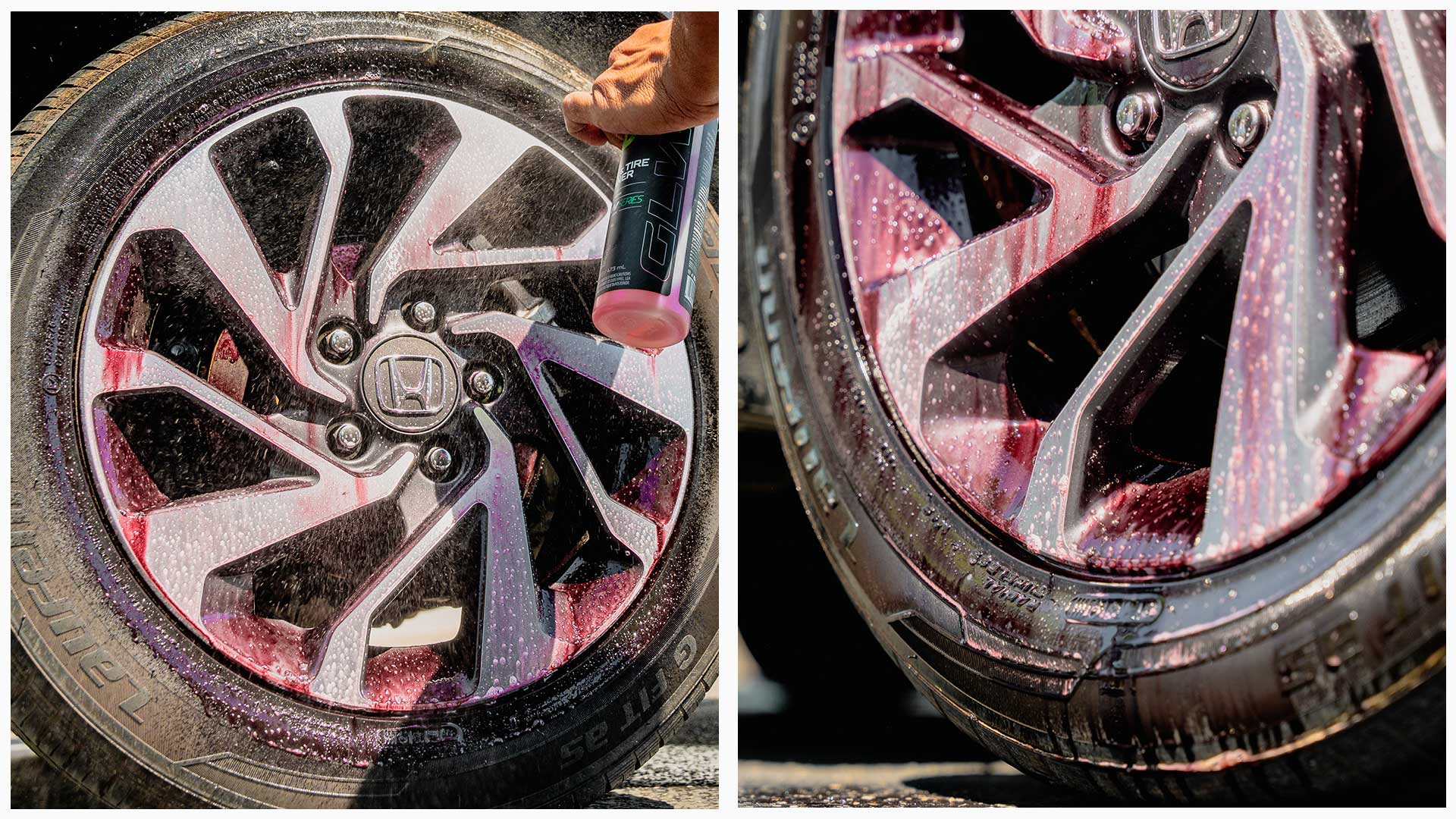
Paint Decontamination
Once the wheels and tires are cleaned up and protected, it’s time to start the paint decon process.
Step 1: Safe Wash & Drying
The first step is to do a full safe wash, as you normally would during a maintenance wash. Be sure to use a pH balanced car wash soap for the best results. Because we want to get a deep clean, let the foam dwell on the car for a couple minutes before going into the contact wash. Using a microfiber wash mitt, start contact washing the entirety of the car. As usual, rinse the car down and thoroughly dry the car.
If your car has bugs that need to be removed, do it during the washing process.

Step 2: Decon Part One - Iron & Fallout Remover Spray
With the car fully washed and dried, the next step is to begin the decontamination process. On lighter colored cars, you may be able to notice the contamination on the paint’s surface, however most of these contaminants are tough to catch with the naked eye. Check for contamination by sliding your fingers on the car's freshly washed panels. If you feel any roughness at all, that panel needs to be decontaminated.
Using 3D GLW Iron Remover, spray the affected panel(s) and let the solution dwell for a few minutes. You’ll know it’s working when the solution starts turning a deep purple color. Once the fallout remover has done its job, rinse (not wipe) the car off with water.
Iron and fallout removers react with these particles by making them water-soluble and removable.
Step 3: Re-Wash
After the car’s affected panels have been treated with the paint decon spray, it’s best practice to wash the car again. This ensures that any traces of particles, iron, fallout and remaining traces of the chemical itself are removed completely. Follow the same process as in step one for the best results.
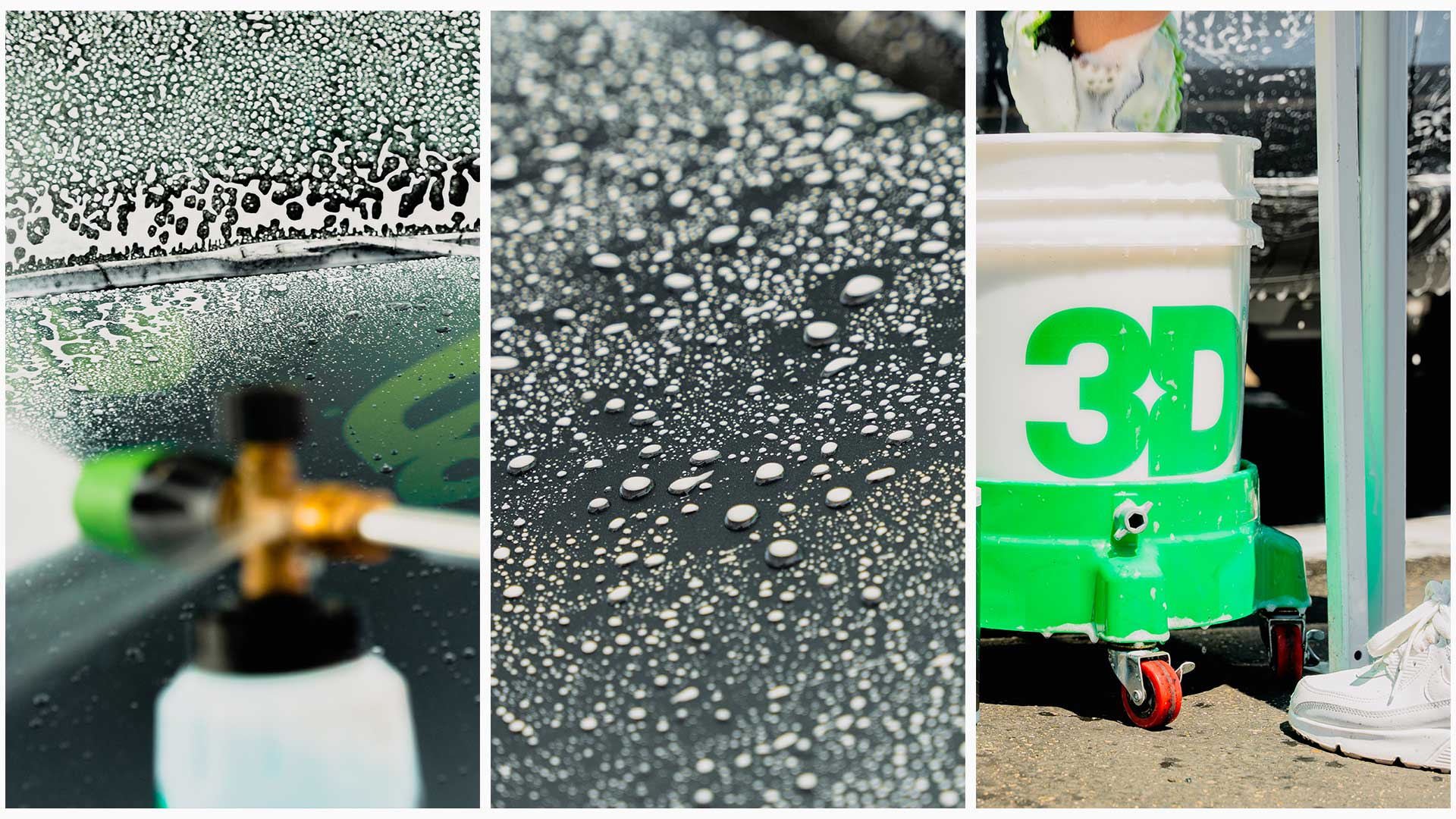
Step 4: Decon Part Two - Claying
Once the car is washed and dried for the second time, it’s time to begin the second step of the decontamination process. Before blindly jumping to claying the entire car, check to see if you need to. Again, run fingers across the car’s painted panels to check for contamination. If it’s as smooth as glass, then you should be fine with moving onto the final step. If you still feel some contamination, then we recommend claying the car.

To clay the car safely, be sure to follow the directions on the label of the product. Don’t use too much force, you don’t need much to get the contaminants off the paint. Work in a crosshatch pattern, applying light pressure and let the clay do the work. Use 3D GLW Clay Lubricant and a clay bar, pad or towel for the best results.
Related: Clay Bar vs. Clay Towel: What’s The Difference?
Step 5: Protection & Finishing
After fully decontaminating, keep in mind that it’s likely you have essentially removed any pre-existing protective layers, such as wax. The last thing you want to do is leave the freshly cleaned paintwork unprotected. Because of the decon process, your paint is now optimal for wax or sealant bonding, or any kind of paint correction.
If the car needs to have paint correction done, now is the time to do that. If not, then use 3D GLW SiO2 Ceramic Wax to give your car a lasting shine and protection.
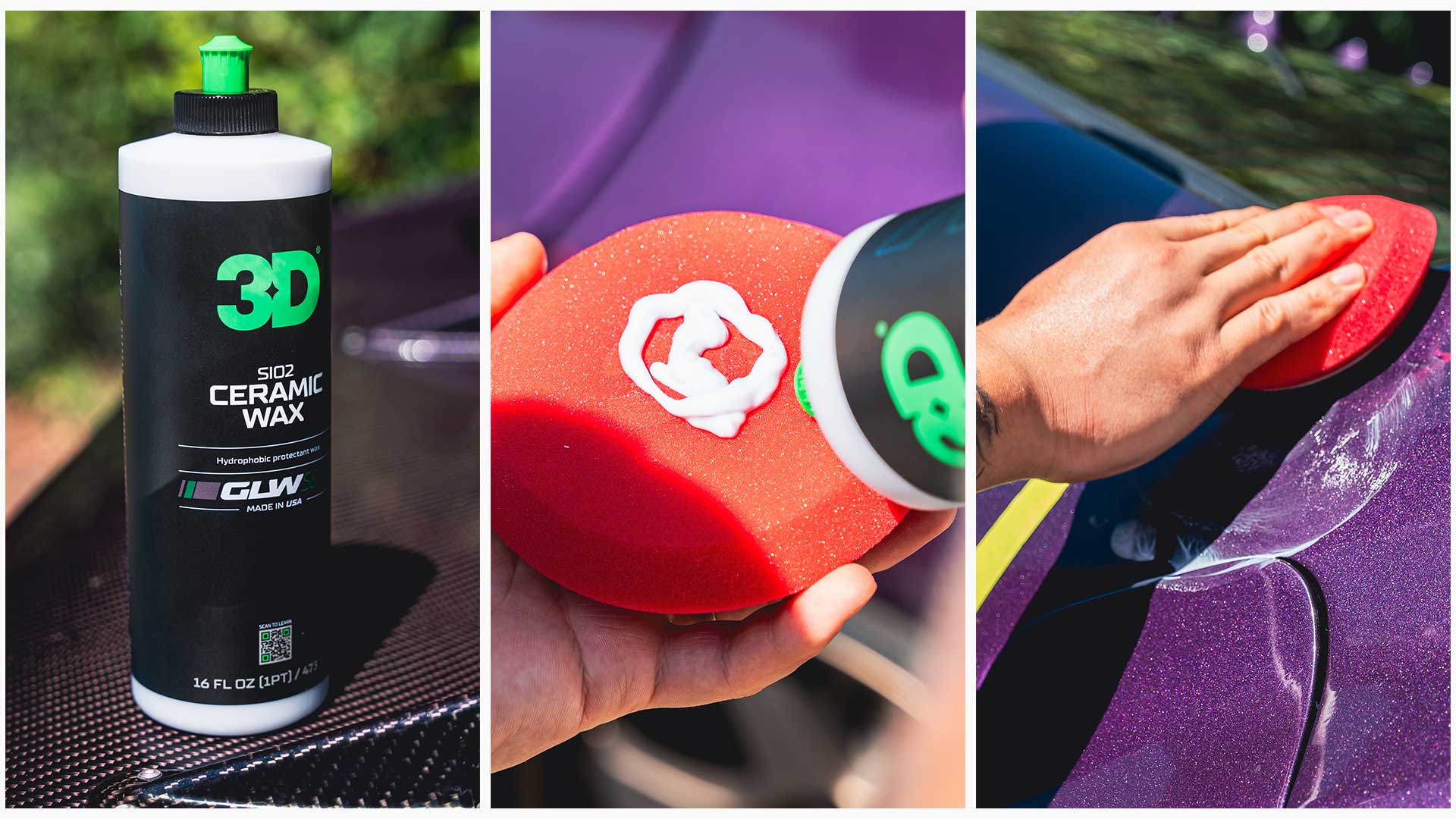
How to Keep Your Car Contaminant Free
Now that you’ve fully decontaminated your car, here are some tips on how to keep it clean:
- Wash your car (the right way) regularly. The best preventative measure against contamination is to wash your car regularly. We recommend once a week for the best prevention. Be sure to use a high-quality pH-balanced car wash soap, like 3D GLW Ultimate Wash.
- Thoroughly dry your car. After washing, be sure to completely dry the car. Use a premium microfiber drying towel, like 3D Hydro-Fil. Alternatively, you can use a leaf blower or air compressor for a hands-free dry.
- Inspect your car’s paint regularly. It’s a good idea to inspect your car’s paint often, typically during every wash. To know if the paint is in need of a decon, run your fingers across the paint. If it isn’t smooth like glass, then it’s time for another decon.
- Spot clean when needed. Spot clean your car when needed, or when you notice a specific area or panel is dirty. Bird droppings and bug splatter should be cleaned up quickly, as prolonged exposure can contaminate the car. Using 3D Bug Remover for bug splatter and 3D GLW SiO2 Ceramic Detailer for other grime is the best way to keep your car clean on-the-go.
- Apply wax or sealant. After doing a paint decontamination, it’s important to re-apply any wax or sealants that may have been stripped in the process. This will keep your future contaminants from bonding to the paint in the future.
The Best Products to Use to Remove Contamination, Fallout & Iron
If your wheels and paintwork are heavily contaminated with iron, fallout, rail dust, etc, you’ll need only the best chemicals to tackle the project. Car care has dramatically evolved over the last few years and the use of acidic and harmful products are a thing of the past. Here at 3D Car Care, we’ve developed an entirely new lineup of products called the 3D GLW Series, specifically formulated with ease-of-use and effectiveness in mind.
From SiO2 infused soap, iron remover spray, ceramic wax, and ceramic trim restorer, the 3D GLW Series has everything you need to detail your car from start to finish. Whether you’re a beginner, professional or DIY weekender, the new GLW Series is the ideal way to get your car clean, and keep it clean.
Effortless Products. Incredible Results. Undeniable Glow.
